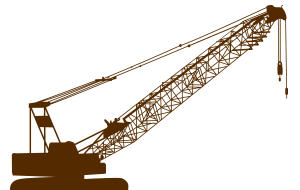Construction vs. Maintenance – OSHA 8/11/94
NOTICE: This is an OSHA Archive Document, and may no longer represent OSHA Policy. It is presented here as historical content, for research and review purposes only.
August 11, 1994
MEMORANDUM FOR:
REGIONAL ADMINISTRATORS
FROM:
JAMES W. STANLEY
Deputy Assistant Secretary
SUBJECT:
Construction vs. Maintenance
OSHA’s regulations define “construction work” as “construction, alteration, and/or repair, including painting and decorating.” at 29 CFR 1926.32(g) and 29 CFR 1910.12(b). They further provide that OSHA’s construction industry standards apply “to every employment and place of employment of every employee engaged in construction work.” id. at 1910.12(a). In interpreting definitional provisions in these regulations, the Occupational Safety and Health Review Commission and the courts have looked to similar definitional provisions in other federal laws and regulations. For example, OSHA’s regulations make specific reference to definitions in the Davis-Bacon Act and regulations promulgated under that Act. The Davis-Bacon Act regulations issued by the Department of Labor broadly define construction work or activity as follows:
(i) The terms “building” and “work” generally include construction activity as distinguished from manufacturing, furnishing of materials, or servicing and maintenance work. The terms include, without limitation, buildings, structures, and improvements of all types, such as bridges, dams, plants, highways, parkways, streets, subways, tunnels, sewers, mains, power lines, pumping stations, heavy generators, railways, * * * excavating,* * *.
(j) The terms construction, completion, or repair mean the following:
(1) all types of work done on a particular building or work at the site thereof * * * 29 CFR 5.2(i) and (j).
In order for work to be construction work, the employer need not itself be a construction company. See e.g., New England Telephone & Telegraph Co., 4 OSHC 1838, 1939 (1976), vacated on other grounds sub nom. and New England Telephone & Telegraph Co. vs. Secretary of Labor 589 F.2d 81 (1st Cir. 1978).
Further, construction work is not limited to new construction. It includes the repair of existing facilities. The replacement of structures and their components is also considered construction work. For example, in Pacific Gas & Electric Co., 2 OSHC 1962 (1975), the Review Commission held that the replacement of a wooden utility pole is covered by the construction industry standards. The utility had argued that the replacement of the pole was “maintenance work,” rather than “construction work.” The Review Commission, however, concluded that pole replacement is “improvement” and, therefore, construction work. Similarly, construction work is typically performed outdoors, rather than at a manufacturing plant. This factor too is another hallmark of construction work. See e.g., Cleveland Electric Co. vs. OSHRC 910 F2d 1333 (6th Cir. 1990).
There is no specified definition for “maintenance”, nor a clear distinction between terms such as “maintenance”, “repair”, or “refurbishment.” “Maintenance activities” can be defined as making or keeping a structure, fixture or foundation (substrates) in proper condition in a routine, scheduled, or anticipated fashion. This definition implies “keeping equipment working in its existing state, i.e., preventing its failure or decline.” However, this definition, (taken from the directive on confined spaces) is not dispositive; and, consequently, determinations of whether a contractor is engaged in maintenance operations rather than construction activities must be made on a case-by-case basis, taking into account all information available at a particular site.
Examples of activity that have been determined to be construction:
OSHA has recognized that repair of highways is construction work. See e.g., Yonkers Contracting Co., 11 OSHC 1994 (1984) (highway contractor cited under construction industry standards in connection with highway rehabilitation project); Karl Koch Erecting Co., 3 OSHC 1223 (1975) (employer cited for violation of construction industry standards in connection with freeway repair project).
OSHA has consistently taken the position that the repair of railroad track and related structures are construction work. Thus, in Secretary of Labor vs. Consolidated Rail Corp., OSHRC Docket No. 91-3134 (filed Jan. 22, 1992), OSHA cited Conrail for violation of its construction industry standards, alleging that maintenance-of-way activities “involve at least in part, construction, alteration and/or repair * * *.” In Consolidated Rail Corp., 1979 OSAHRC LEXIS 640, 1979 OSHC (CCH) p. 23,392 (1979), OSHA cited a railroad for violation of construction industry standards in connection with replacement of damaged railroad ties on a bridge. See also Burlington Northern Railroad Co., 14 OSHC 1402 (1989) (citation for failing to shore trench). More recently, in a 1993 case settled with the Norfolk Southern Railroad, it was determined that the replacement of thousands of aged and damaged ties and tons of ballast is “improvement and/or repair of track,” and consequently such work is construction work. The case also determined that the repair and rehabilitation of railroad tracks, on site, using heavy equipment and workers spread over a large geographical area is also construction work.
In other instances, where an activity cannot be easily classified as construction or maintenance even when measured against all of the above factors, the activity should be classified so as to allow application of the more protective 1910 or 1926 standard, depending on the hazard. In such cases the citation should be issued in the alternative with the emphasis on the more protective standard.
Note: Additional clarification on this issue is available in the November 18, 2003 letter to Mr. Raymond V. Knobbs (Added 6/14/2004)
